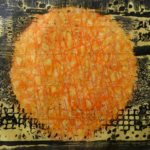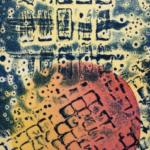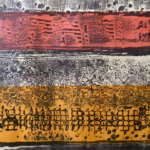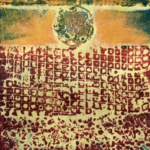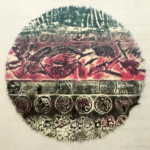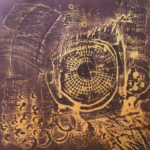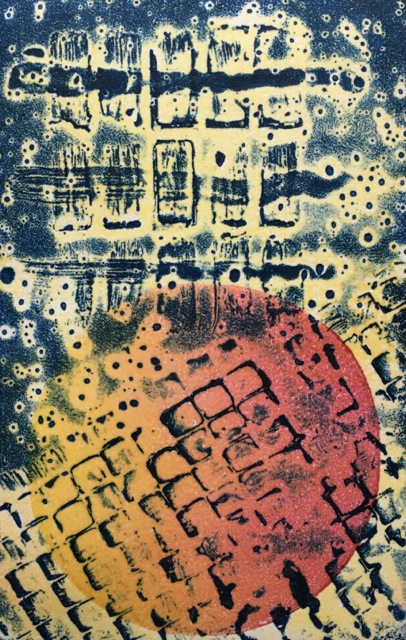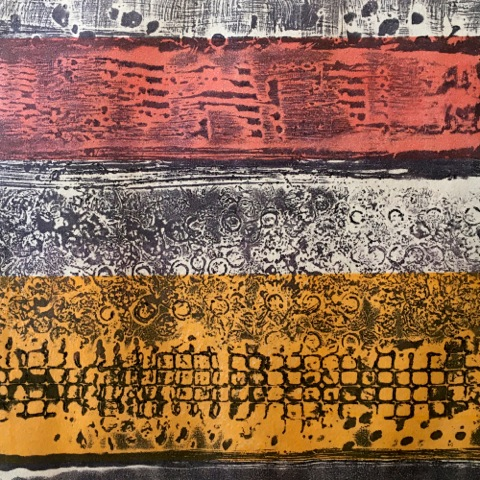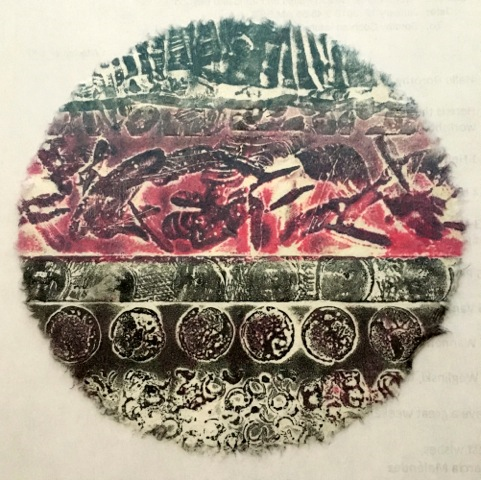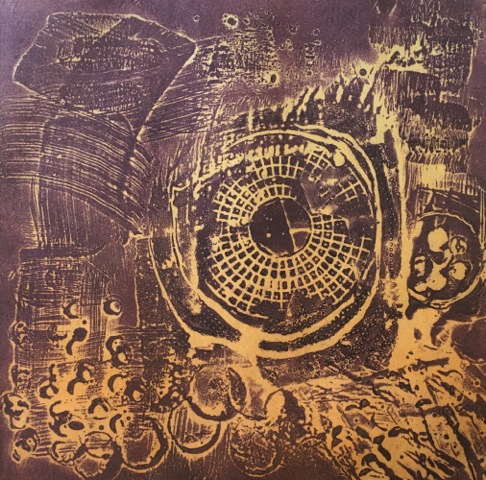Dorothy Cochran
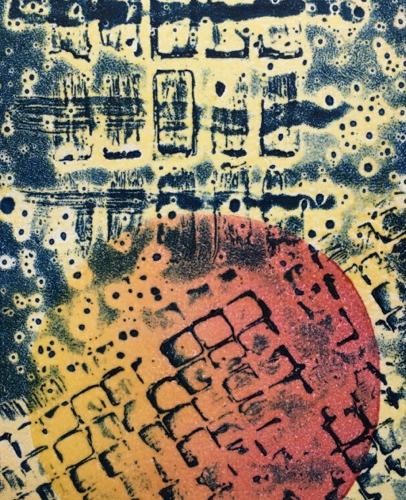
Montclair Art Museum, Montclair, New Jersey
Dorothy Cochran is an accomplished East coast printmaker, who pushes the boundaries of how to create works on paper. With extensive experience as an artist, educator and curator, she has developed innovative ways to work and layer substrates, creating prints of luminous quality. She is best known for her expertise and broad command of multiple print methods. Her work explores circular imagery that evokes science, spirituality and the invisible within the framework of an abstract vocabulary. In addition to representation in major art collections, and museums, she has won many honors, awards and grants for her work. In 2017 two individual curators from the prints and drawings department at The Metropolitan Museum of Art in New York included three of her works in two separate International Print Exhibitions, in one she was given first prize out of 632 entries. She is a featured presenter at the International Encaustic Conference in Provincetown, Massachusetts and teaches workshops throughout the county from New York City to Maui, Hawaii. Extended ten week classes are held on a regular basis at the Montclair Art Museum in New Jersey where she lives and maintains her studio practice. Dorothy has an MFA in painting and printmaking from Columbia University in New York City.
Artist Statement
My work explores circular imagery that evokes science, spirituality and the invisible, positioning the viewer in art history and a diversity of cultures. The circle is my iconic image. In searching for a distinct abstract vocabulary, I find inspiration in sources such as solar systems, metaphysical thought, microscopic science and the bounty of nature. Blending these influences into visual form, I push for innovative methods to express the drama, vitality and truth that I seek to embrace. I work in series that combine content and technique with the gesture of the hand evident in the work.
Printmaking processes excite me. When engaging an image, there are limitless possibilities to choose from. I like crossing boundaries, experimenting and layering multiple techniques to discover the core meaning in my work. Each new process reveals truths about the marks and nuances of the plate and paper surface, adding to the enigma of the finished piece.
Trained in traditional print methods, I have found this foundation invaluable for breaking the rules, yet maintaining a high level of craftsmanship. Combining old techniques with new materials always pushes my work to become more than it has been, clarifying the themes I have worked with throughout my professional career.
There is magic in the pressing of paper to plate, a birth and a marriage all at once. Experiencing that emotion is at the core of my practice with all of its ramifications. My studio is completely non-toxic as well as the venues in which I teach.
Techniques
- Monotype, including Chin Colle, Gelatin Plate, Yupo
- Linocut
- Woodcut
- Encaustic Collagraph including plexiglass, yupo, washi
- Collagraph
- Silk Aquatint
- Solarplate
- Drypoint
- Viscosity
- Carborundum
- History and Connoisseurship of Prints
- Press and Hand Printing
Favorite Products
Akua Intaglio inks have helped me move towards my goal of a completely non-toxic, green studio practice. I have worked with them since the nineties and have enjoyed their evolution to the fine inks they are today under the Speedball name.
I especially love working with Akua Transparent Base to create clear, pure colors that can be easily layered. I often utilize multiple plates for my encaustic collagraphs and relief prints with Yupo. The pigments are so intense that little is needed to accomplish multiple layers without creating a muddy surface.
I use both the Mag Mix and Blending Medium for viscosity monotypes and the release agent to create further “ghost” prints from the second run through the press.
Most recently I have fallen in love with the Akua Carborundum Gel. It creates a rich velvety surface when used alone. I also use it for tonal variations on diverse substrates, especially added to drypoints and solarplates.
Although I print most of my plates on my two Charles Brand presses, I have recently added hand rubbing on waterleaf and washi papers to my studio practice and teaching. Akua Inks work beautifully on the dampened above papers and affords those artists who do not have a press, the ability to make beautiful prints. Encaustic collagraphs, gelatin monotypes, and other forms of relief printmaking can be accomplished with great success.

